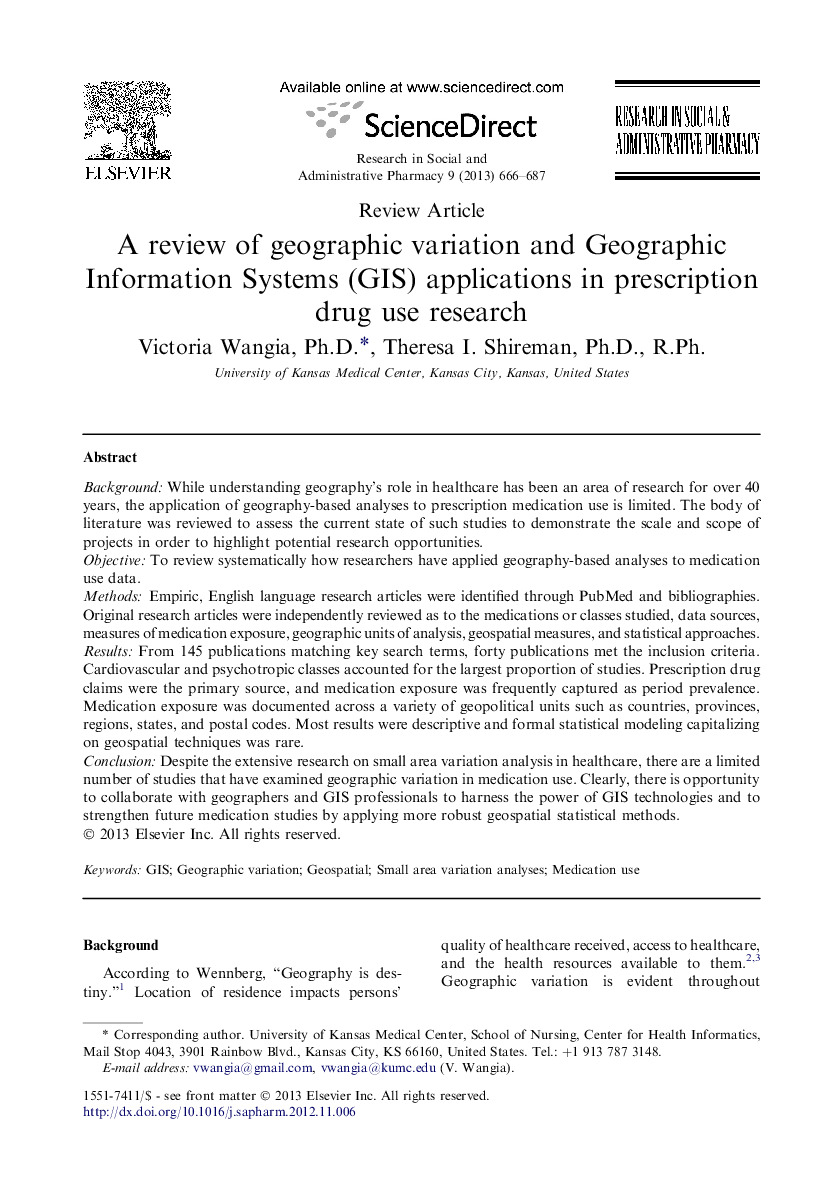| Article ID | Journal | Published Year | Pages | File Type |
|---|---|---|---|---|
| 2508518 | Research in Social and Administrative Pharmacy | 2013 | 22 Pages |
BackgroundWhile understanding geography's role in healthcare has been an area of research for over 40 years, the application of geography-based analyses to prescription medication use is limited. The body of literature was reviewed to assess the current state of such studies to demonstrate the scale and scope of projects in order to highlight potential research opportunities.ObjectiveTo review systematically how researchers have applied geography-based analyses to medication use data.MethodsEmpiric, English language research articles were identified through PubMed and bibliographies. Original research articles were independently reviewed as to the medications or classes studied, data sources, measures of medication exposure, geographic units of analysis, geospatial measures, and statistical approaches.ResultsFrom 145 publications matching key search terms, forty publications met the inclusion criteria. Cardiovascular and psychotropic classes accounted for the largest proportion of studies. Prescription drug claims were the primary source, and medication exposure was frequently captured as period prevalence. Medication exposure was documented across a variety of geopolitical units such as countries, provinces, regions, states, and postal codes. Most results were descriptive and formal statistical modeling capitalizing on geospatial techniques was rare.ConclusionDespite the extensive research on small area variation analysis in healthcare, there are a limited number of studies that have examined geographic variation in medication use. Clearly, there is opportunity to collaborate with geographers and GIS professionals to harness the power of GIS technologies and to strengthen future medication studies by applying more robust geospatial statistical methods.
